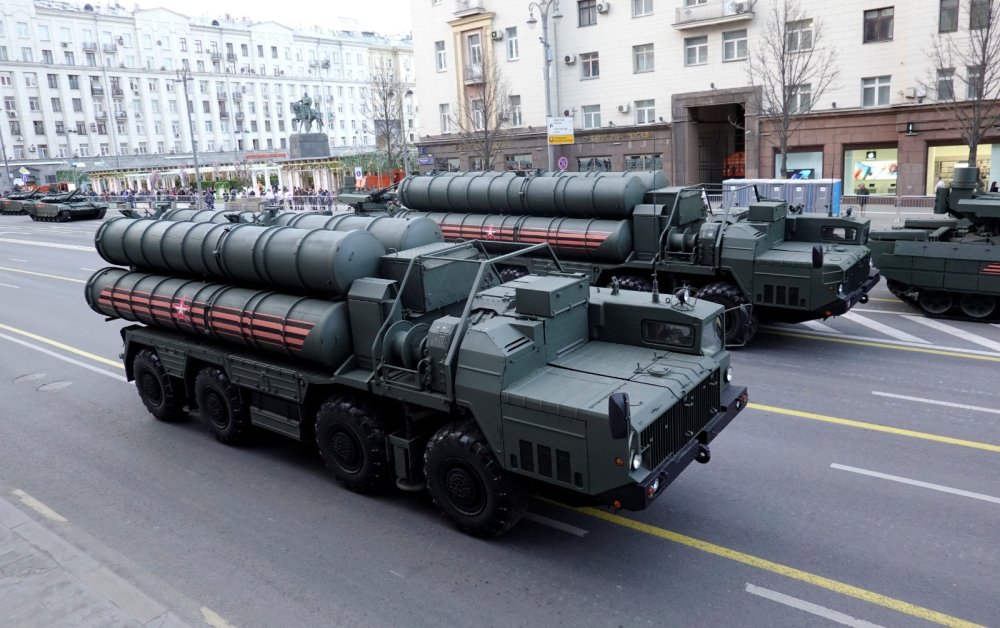Russia’s next-generation air and missile defense system is on the verge of entering serial production, according to the Russian Deputy Prime Minister Yuri Borisov. “On time, they are putting a new system into operation-- the S-500,” Borisov told Russian news outlet Interfaks earlier today.
Borisov is the latest top-tier Russian official to tease the readiness of the S-500 over the course of this year, joined by the likes of Aerospace Forces Deputy Commander Lieutenant General Yuri Grekhov and Rostec CEO Sergei Chemezov. The Russian government and defense industry continues to reaffirm that the S-500 will be delivered within the timetable set by Russia’s 2027 state armament program, which established that the first, serially-produced S-500 will enter service in 2020.
A defense industry source told Russian news outlet Izvestia last month that the S-500 recently underwent field testing in Syria, where the Russian Aerospace Forces continue to maintain a significant presence. The Russian Defense Ministry unequivocally denied that the S-500 was ever on Syrian soil in an October 2 statement, claiming that “there was no need” for further testing.
Despite the S-500’s imminent release, official specifications details remain as elusive as ever. Still, years of industry insider leaks, scattered developer commentary, and Russian reporting combine to give us a coherent picture of what to expect from the S-500. With a widely expected maximum operating range of 600 km and a system response time of 3 to 4 seconds, the S-500 reaches a whopping 200km farther and is around 6 seconds faster to respond than its S-400 predecessor. Underlining its strategic role, the S-500’s 77N6 and 77N6-N1 missiles can intercept hypersonic cruise missiles and ICBMs, as well as aerial targets flying at a speed of over 5 Mach. The manufacturer, Almaz-Antey, claims that the S-500 can even strike low-orbit satellites and certain types of spacecraft in near space, though it remains to be seen if the S-500 will face a performance trade-off when operating at such extreme altitudes. Formidable as it is in isolation, the S-500 can also complement existing systems such as the S-400 and S-300 by expanding Russian airspace and providing a further layer of defense against saturation strikes.
Ayatollah Ruhollah Khomeini becomes the first Supreme Leader of Iran.
Illinois becomes the 21st U.S. state.
Unsurprisingly, the S-500 is being branded as a silver bullet against stealth fighters in general and the F-35 in particular. As previously covered by The National Interest, Almaz-Antey head engineer Pavel Sozinov asserted that the S-500 is a “blow against American prestige,” that “system neutralizes American offensive weapons, and surpasses all of America’s much-hyped anti-air and anti-missile systems.”
It has yet to be revealed how many S-500 units are planned to be produced over the coming decade. The recently announced S-500 joint production partnership with Ankara bodes well for the long-term financial stability of the S-500 platform, though the extent of Turkish participation remains to be seen.
However, the S-500 does not have to be mass-manufactured to serve its intended purpose; in fact, it is increasingly apparent that the Kremlin never had any serious intention of replacing every S-400 with an S-500. Almaz-Antey is positioning the S-500 not as a successor to the S-400, but as a different class of air defense system that is designed to reliably intercept the most dangerous strategic threats.
Mark Episkopos is a frequent contributor to The National Interest and serves as research assistant at the Center for the National Interest. Mark is also a PhD student in History at American University. This article first appeared earlier this month.

No comments:
Post a Comment